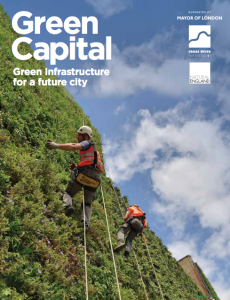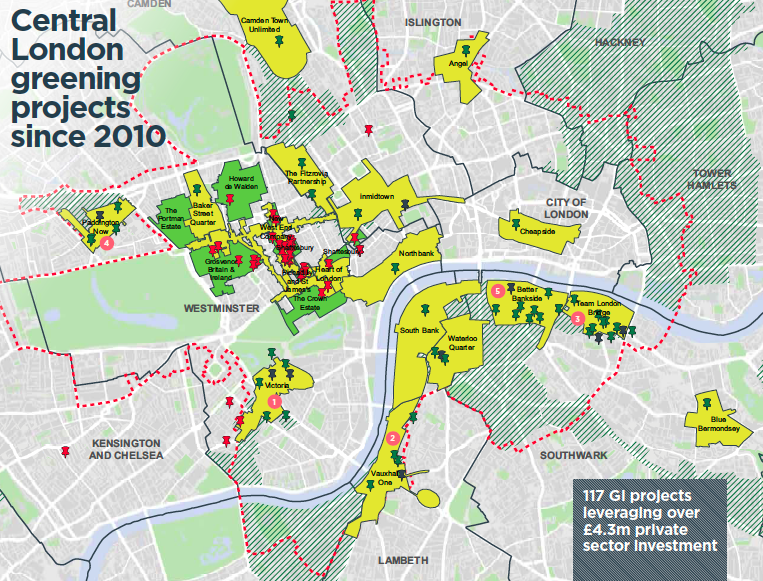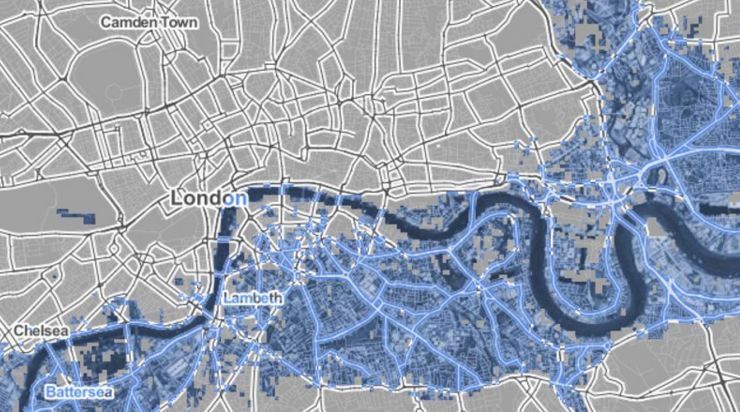Site search:
-
What’s new?
Energy for London Tags
Brent Buildings Camden Carbon Emissions CHP Cities Climate Adaptation Community Heating Community Initiatives Croydon Data DECC Decentralised Energy Distribution ECO Energy Costs Energy Efficiency Enfield FIT Fuel Poverty Funding Green Deal Hackney Haringey Housing Islington Lambeth Library Local Authorities Mayor Newham Ofgem Olympics Photovoltaics Planning RE:FIT RE:NEW Renewable Energy Retrofit Southwark Tower Hamlets Transport Waltham Forest Waste WestminsterEnergy Archives:
- February 2021 (1)
- January 2021 (15)
- December 2020 (15)
- November 2020 (9)
- October 2020 (3)
- August 2020 (5)
- July 2020 (3)
- June 2020 (4)
- April 2020 (10)
- March 2020 (5)
- February 2020 (2)
- January 2020 (3)
- October 2019 (1)
- September 2019 (4)
- August 2019 (2)
- July 2019 (1)
- August 2018 (1)
- November 2016 (8)
- October 2016 (8)
- September 2016 (2)
- August 2016 (8)
- July 2016 (14)
- April 2016 (12)
- March 2016 (16)
- February 2016 (8)
- January 2016 (4)
- December 2015 (1)
- November 2015 (1)
- October 2015 (16)
- September 2015 (3)
- June 2015 (1)
- May 2015 (1)
- April 2015 (1)
- March 2015 (1)
- February 2015 (1)
- January 2015 (1)
- December 2014 (18)
- November 2014 (4)
- August 2014 (8)
- July 2014 (7)
- June 2014 (25)
- May 2014 (8)
- April 2014 (4)
- March 2014 (12)
- February 2014 (7)
- January 2014 (13)
- December 2013 (11)
- November 2013 (15)
- October 2013 (15)
- September 2013 (18)
- August 2013 (5)
- July 2013 (20)
- June 2013 (33)
- May 2013 (8)
- April 2013 (16)
- March 2013 (25)
- February 2013 (14)
- January 2013 (20)
- December 2012 (23)
- November 2012 (23)
- October 2012 (25)
- September 2012 (14)
- July 2012 (12)
- June 2012 (43)
- May 2012 (20)
- April 2012 (8)
- March 2012 (40)
- February 2012 (39)
- January 2012 (40)
- December 2011 (22)
- November 2011 (40)
- October 2011 (33)
- September 2011 (48)
- August 2011 (40)
- July 2011 (58)
- June 2011 (41)
- May 2011 (80)
- April 2011 (38)
- March 2011 (33)
- February 2011 (25)
- January 2011 (24)
- December 2010 (3)
- November 2010 (7)
- October 2010 (6)
- September 2010 (7)
- August 2010 (1)
- July 2010 (2)
- June 2010 (4)
- May 2010 (1)
- March 2010 (3)
- February 2010 (3)
- December 2009 (5)
- November 2009 (2)
- October 2009 (3)
- July 2009 (3)
- June 2009 (1)
- April 2009 (1)
- March 2009 (1)
- February 2009 (1)
- January 2009 (1)
- December 2008 (2)
- October 2008 (1)
- September 2008 (1)
- July 2008 (1)
- March 2008 (2)
- January 2008 (2)
- October 2007 (1)
- September 2007 (3)
- July 2007 (1)
- March 2007 (1)
- February 2007 (3)
- November 2006 (3)
- August 2006 (1)
- February 2006 (1)
- May 2005 (1)
- February 2004 (1)
Tag Archives: Climate Adaptation
New London Housing SPG Published
April 2016: Somewhat hidden away on the GLA website (as most things are at the moment…) is a new supplementary planning guidance (SPG) on housing, published a few weeks ago. A detailed history on the lengthy consultation process behind this SPG and its relationship to the London Plan and other key GLA documents is helpfully set out at the designingbuildings wiki, which is worth checking.
The SPG includes a series of housing ‘Standards’ which stem from the policies contained in the London Plan’s Climate Change chapter, with the SPG providing further specific guidance on implementing these policies. Standard 35 is of particular importance, as it is concerned with the London’s Plan requirement for zero carbon development: this issue has had a long and complex history – with the SPG’s confirming that new housing development in London will need to be zero carbon from October 2016 is significant – which is covered in further detail in another post here.
The SPG also refers to action to mitigate ‘overheating’ in new homes in Standard 36 (linked to Policy 5.9 of the London Plan) stating that new “housing needs to be designed for the climate it will experience over its life, taking into account predicted climate change, the potential for summer heat waves, London’s urban heat island effect and the limits of thermal comfort of future residents”.
The GLA’s Preparing Energy Assessments guidance document has also been expanded and updated in line with these changes in the Housing SPG (with a new section 5 entitled ‘Implementation of zero carbon homes (from 1 October 2016)’ added) and is available to download here (or download from this website here).
Posted in Decentralised Energy, Energy Efficiency, News, Renewable Energy
Tagged Climate Adaptation, Housing, Planning
Leave a comment
Green Capital
March 2016:  “London’s businesses can play an important role in greening the city, making it a more attractive and healthy place. To help businesses to green the city, we’ve supported 15 ‘green infrastructure audits’. These identify where greening projects, like green roofs, green walls, and planters, could be put in place. We are also supporting businesses to install these greening projects”
“London’s businesses can play an important role in greening the city, making it a more attractive and healthy place. To help businesses to green the city, we’ve supported 15 ‘green infrastructure audits’. These identify where greening projects, like green roofs, green walls, and planters, could be put in place. We are also supporting businesses to install these greening projects”
Read the GLA case study guide, Green Capital, here and watch the video here.
The Mayor’s Green Infrastructure Task Force report, published in December 2015, can be read here. Further information on Greening London can be seen here on the GLA website alongside London’s Green Roof Map.
Adaptation responses to climate change differ between global megacities
March 2016: “The major cities in the Global North are protecting themselves against the risks of climate change, while cities in developing countries continue to suffer from massive under-investment. A study on ten cities, led by Lucien Georgeson of University College London, found that financing for climate change adaptation had increased across the board by 3% to 4% per year in recent years.” Read the full article Euroactiv article
“Without significant action against climate change, much of central London may be under water by 2050.”
UK’s most sustainable historic building in London’s West End
22 October 2015: The Guardian reports: “Hailed as the UK’s most sustainable historic building, the Regent Street office scheme, 7 Air Street, comes with an ecological roof incorporating flowers, vegetation, grasses and habitats for insects, birds and bats. The building has received BREEAM outstanding rating, the highest award possible from the industry body which judges best practice for sustainability in the built environment.
“It features solar panels, low energy air conditioning, LED lighting and a unique central energy centre, powered by fuel cell technology, which saves around 350 tonnes of carbon dioxide emissions each year, while providing power to 500,000 sq ft of commercial and residential accommodation on Regent Street, including the Cafe Royal Hotel and the 20 Air Street office building.“
A previous post provides some additional details behind the fuel cell technology used.
Posted in Decentralised Energy, News
Tagged Climate Adaptation, Fuel Cells, Lighting, Retrofit, Westminster
Leave a comment
Resilience to climate change: who pays (and who benefits)?
October 2015: A Joseph Rowntree Foundation (JRF) and Royal Geographical Society event taking place on the evening of 17 November 2015 exploring community resilience and adaptation to climate change. Chairing the event will be Alex Nickson, Strategy Manager, Climate Change Adaptation, Greater London Authority (and lead on the Mayor’s London Climate Change Adaptation Strategy). Full details on how to register are posted here.
Thames tidal flood defence inspection under way
27 May 2015: ENDS journal reports that “The Environment Agency (EA) has started detailed engineering and structural investigations into the condition of tidal flood defences in London and the Thames estuary.” The work is being carried out as part of the Environment Agency’s (EA) ten-year Thames Estuary Asset Management programme to refurbish and replace tidal flood defences in London and the Thames estuary (more info on TEAM2100 here), and the agency recently awarded the 10-year refurbishment deal to Balfour Beatty to run the project which is worth £250 million.
A great piece in The Guardian earlier this year on the Thames Barrier asks how safe is London from another major flood?
Energy & Climate Questions to the Mayor
January 2015: This month the Mayor has been asked questions in relation to:
Fuel Povery and Children; Meetings of the Mayor’s London Green Infrastructure Task Force; Membership of the Mayor’s London Green Infrastructure Task Force; London Plan policies encouraging development of solar farms; consideration of carbon emissions in policy decision making
Invitation to attend the European Capital Cities meeting ahead of the Paris 2015 IPCC summit; Progress made in 2014 to delivering the London Climate Change Adaptation Strategy; Measuring CO2 emissions across the GLA Group; An update on the GLA group’s Carbon Reduction Commitment (CRC) reports; the Mayor’s concern over increasing signs of climate change; GLA Economics analysis on energy
Communication to the Treasury over tax incentives for community energy projects; TfL’s hedging policy on energy prices; Misleading information on shale gas; Reallocation of RE:NEW funds to RE:FIT programme; Havering Solar Farm planning application; New powers to Ofgem; RE:NEW programme underspend; An update on RE:NEW programme projections; Research commissioned by the GLA’s Environment Team
Previous months questions to the Mayor can be found here.
Posted in Energy Efficiency, News, Renewable Energy
Tagged Carbon Emissions, Climate Adaptation, Community Initiatives, Photovoltaics, RE:FIT, RE:NEW
Leave a comment
London Green Infrastructure Taskforce details revealed
27 January 2015: The Mayor had previously announced in his draft London 2050 Infrastructure Plan that a new London Green Infrastructure Taskforce was to be established (details of which are provided on a previous post here). Membership of the Taskforce has now been revealed, as well the group’s terms of reference and minutes of their first meeting.
The purpose of the Taskforce is set out as:
“to bring together a wide range of interests and expertiseto identify how to encourage a more strategic and long-term approach to investment in and delivery of green infrastructure, which is defined as:
A network of green spaces – and features such as street trees and green roofs – that is planned, designed and managed to deliver a range of benefits, including: recreation and amenity, healthy living, mitigating flooding, improving air quality, cooling the urban environment, encouraging walking and cycling, and enhancing biodiversity and ecological resilience.
It will prepare a report advising the Mayor on the strategic issues which need to be addressed in relation to the design, management and operation of London’s green infrastructure.”
Further details of the Task Force are posted on the GLA website here. Papers from the Taskforce’s first meeting, held on 21 November 2014 – are linked below
Microclimatic effects of green and cool roofs in London
December 2014: Paper presented in the latest issue of academic journal Energy in Buildings – Microclimatic effects of green and cool roofs in London and their impacts on energy use for a typical office building – which presents the results from a modelling study that assessed the effectiveness of retrofitted green and cool roofs at reducing energy use for a typical office in Central London. These technologies were compared to application of retrofitting traditional insulation.
The building modelling results indicate that in the current climate, green roofs reduce annual energy use within the building. The level of savings are reduced when green roofs are dry in the summer. Cool roofs are more effective in the summer, but result in an annual energy penalty due to their performance in winter. In a 2050 climate scenario, both green and cool roofs result in a reduction in annual energy use. The application of traditional insulation is the most effective technology at reducing annual energy use. Adding insulation and a green or cool roof reduces the relative effectiveness of the roofs.
Unfortunately – the paper is not available for free..
London Green Infrastructure Task Force
December 2014: A new Mayoral Decision (MD) document concerned with funding arrangements for the research and production of the London Infrastructure Plan 2050 (see previous post on the consultation document for the Plan here) provides an update on proposals in the consultation to establish a London Green Infrastructure Task Force.
The consultation document stated that the “the Mayor is establishing a Green Infrastructure Task Force to advise on the future design and management of London’s green infrastructure … the Task Force will be established in Autumn 2014 and will meet regularly in 2015 to consider the key issues and challenges facing London’s green infrastructure in the medium and longterm. By the end of 2015 it will report on its findings, including recommendations for the governance and funding arrangements required for planning, co-ordinating and investing in green infrastructure programmes and strategic projects.”
No further information appears to be have been made available to date by the Mayor on the make up of the task force or whether it has held any meetings as yet. However, the new MD sets out that the “Green Infrastructure Task Force has been convened to advise on how to establish an integrated network of green infrastructure that reflects the full range of benefits offered by green infrastructure. A budget of £20,000 is required to provide the Task Force with the research support they will require to collate and evaluate evidence on green infrastructure in London” Continue reading…
Energy People and Society presentations
24 June 2014: A series of interesting papers presented at the first UCL symposium on energy, people and society include a number of case studies focused in London, which include:
- District Heating in Pimlico: Analysing the social contract created through energy infrastructure available here.
- Capturing the Social Value of Retrofit at Scale (a case study in Poplar) available here
- Heritage and Environmental Values in Sustaining Heritage Domestic Buildings: A Residents’ Perspective (case study in Walthamstow) available here
- Greenroofs and Sustainability: Energy, Performance, Time (case studies across London) available here
- Urban Energy Landscapes available here
Posted in Decentralised Energy, News
Tagged Climate Adaptation, Community Heating, Retrofit, Tower Hamlets, Waltham Forest, Westminster
Leave a comment
Vulnerability of London’s Economy to Climate Change
June 2014: Academic research from 2013 examining a model “developed to explore the sensitivity of the London economy to loss of production capacity in sectors affected by climate change related damage.” The paper is fully downloadable here.



